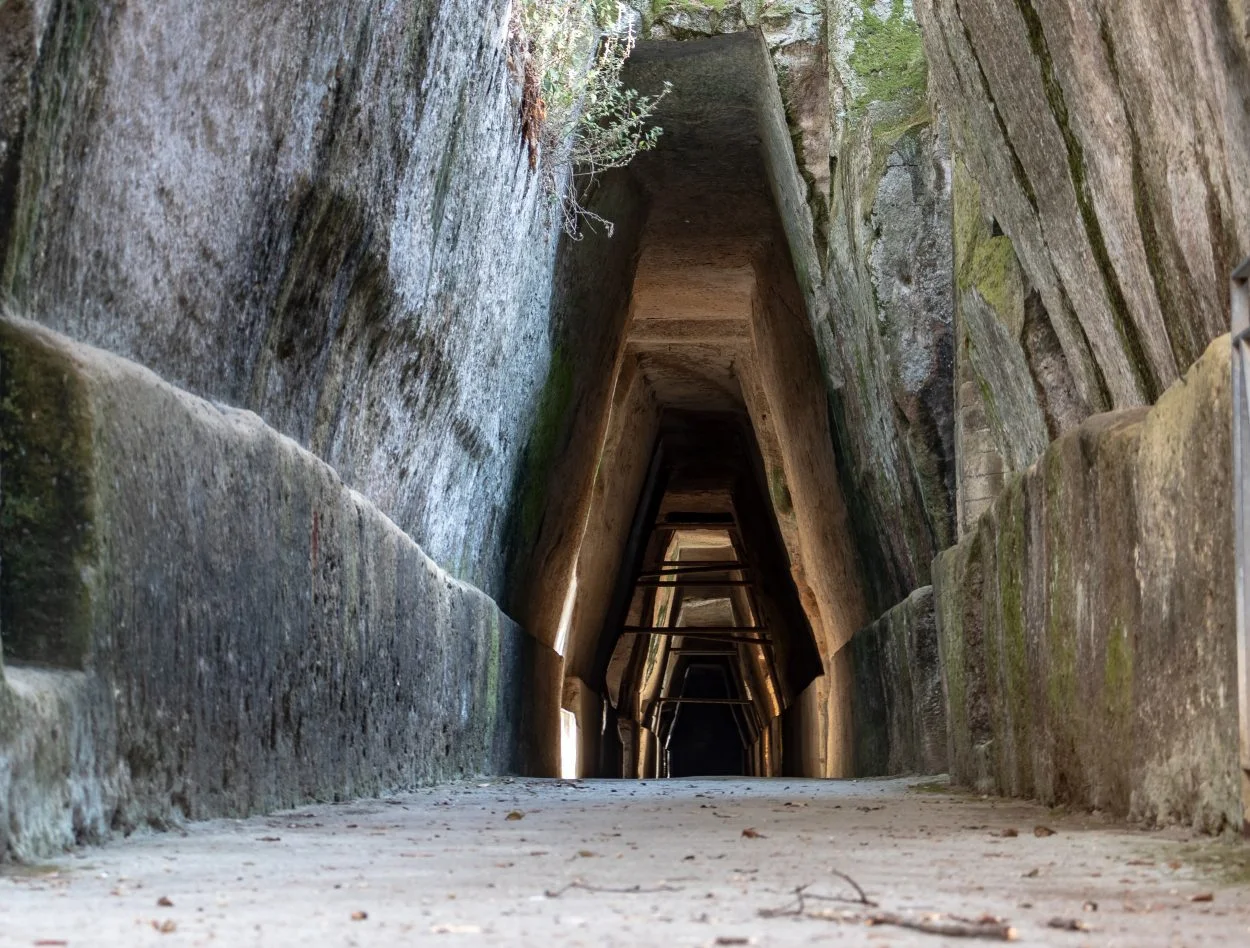The Cave of the Sibyl is a subterranean complex beneath the ancient city of Cumae, located on the outskirts of the present-day Metropolitan City of Naples in Campania, Italy.
The cave has been associated with the Cumaean Sibyl, a priestess presiding over the Apollonian oracle, who according to legend, prophesied from the depths of the earth beneath the temple to Apollo, where she wrote her prophecies on leaves that were then displayed at the cave’s entrance.
In Ovid’s Metamorphoses, the Sibyl is described as a mortal who attained longevity when Apollo offered to grant her a wish in exchange for her virginity. She took a handful of sand and asked for as many years as the grains lasted, but later refused the god’s love and withered away.
The Cumaen Sibyl is also mentioned in Virgil’s Aeneid, where Aeneas, the Tojan hero from Greco-Roman mythology visits the Sibyl for guidance in reaching the underworld, as Cumae is situated near Lake Avernus, a volcanic crater lake where an entrance to the underworld was located.
The Cave of the Sibyl was discovered in 1932 by the Italian archaeologist, Amedeo Maiuri (famous for his archaeological investigations of the Roman city of Pompeii), who drew upon parallels with the description by Virgil in the 6th book of the Aeneid to suggest the Cumaean Sibyl association.

The architecture of the cave suggests that it was probably constructed around the 5th century BC during the Greek period, although Amedeo Maiuri proposed a construction date of between the seventh and sixth centuries BC. The lack of dateable material or ex-votos and inscriptions has made dating on architectural elements alone inconclusive.
The interior consists of a 131-metre rock-cut passageway that runs in parallel to the cliff face. The walls are trapezoidal in shape, separated by six openings that illuminate the cave interior.
At the end of the passageway is a rectangular room with a vestibule on the left side, leading into a small room divided into three smaller cells that has been proposed as the legendary oracular room where the Sibyl declared her predictions (although construction of the room probably dates from the Roman period).
Some archaeologists have proposed an alternative cave site as the home of the Sibyl. A tunnel complex near Baiae (part of the volcanically active Phlegraean fields that conforms to the description in the Aeneid of Aeneas’ journey to the underworld and back) and has an underground geothermally-heated stream which could represent the river Styx.
Header Image Credit : Imma Gambardella – Shutterstock





